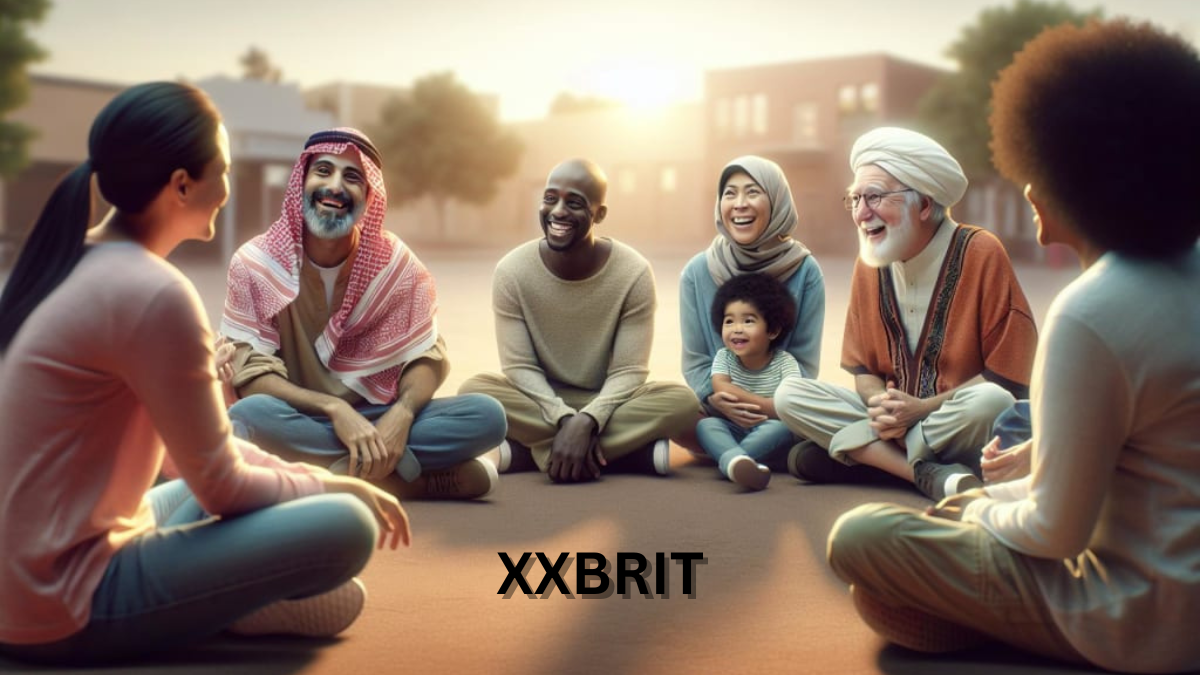human gathering fake The modern era is teeming with social events, conferences, and gatherings that claim to foster genuine human connections. But not all that glitters is gold—many of these so-called “human gatherings” are, in reality, fakes designed to exploit attendees. This phenomenon has been growing, fueled by clever marketing tactics and societal pressures. In this article, we delve deep into the intricacies of “human gathering fake,” exploring its signs, impacts, and how to distinguish between the authentic and the artificial.
What Are Fake human gathering fake?
In the simplest terms, fake human gathering fake are events that present themselves as opportunities for meaningful interaction, growth, or networking but fail to deliver on their promises. These gatherings often have ulterior motives, ranging from financial exploitation to misleading agenda-setting.
The Rise of Superficial Events
The digital age has amplified the reach and visibility of events. Social media platforms are brimming with advertisements for conferences, retreats, and workshops that promise transformative experiences. While some deliver on their claims, many are orchestrated with little intention of providing value. Instead, they focus on creating an illusion of importance through curated aesthetics, exaggerated testimonials, and inflated promises.
For instance, some organizers rent lavish venues and hire influencers to post about the event, creating a buzz that doesn’t align with the experience. Attendees often leave feeling underwhelmed, realizing they paid a premium for an empty shell.
The Profit-Driven Model

Many fake human gathering fake prioritize profit over purpose. High ticket prices, hidden fees, and aggressive upselling tactics are common traits. Once you’ve paid the entry fee, you’re bombarded with pitches for additional “premium” services or products that supposedly hold the key to the event’s true value.
Moreover, these gatherings often feature speakers or facilitators with questionable credentials, using buzzwords and motivational jargon to mask their lack of substance. Attendees leave not only financially drained but also emotionally disappointed.
Identifying the Hallmarks of Fake human gathering fake
Not all events are created equal, and discerning between genuine and fake human gathering fake can save you from disappointment. Here are some key indicators to watch out for:
Over-The-Top Marketing
Fake gatherings often rely on flashy marketing campaigns. They create hype through social media, showcasing celebrity endorsements, luxurious venues, or vague but alluring promises like “Discover your true self” or “Unlock unlimited success.” These claims are often not backed by clear agendas or deliverables.
A closer look at these advertisements often reveals inconsistencies. For instance, overly generic testimonials or a lack of detailed information about the event’s content should raise red flags. Genuine events are transparent, providing clear schedules, speaker profiles, and tangible outcomes.
Lack of Credible Organizers
Another hallmark of fake gatherings is the absence of reputable organizers. Researching the people or organizations behind an event can reveal a lot. If their credentials are dubious or their online presence is filled with vague claims rather than concrete achievements, it’s a sign to tread carefully.
Fake events often feature self-proclaimed experts with little to no verifiable expertise in their fields. They might use impressive-sounding titles or affiliations to add legitimacy, but a quick fact-check can expose the reality.
Emphasis on Exclusivity
Many fake gatherings create a sense of urgency and exclusivity, claiming there are limited spots or offering “VIP” access for an extra fee. This tactic preys on people’s fear of missing out (FOMO), pushing them to make impulsive decisions without thoroughly vetting the event.
While exclusivity can be a legitimate aspect of some high-quality events, it should never overshadow transparency. Genuine organizers prioritize clarity over gimmicks.
The Psychological Impact of Fake Gatherings
Attending a fake gathering isn’t just a financial loss; it can also take a significant toll on one’s mental and emotional well-being.
Disillusionment and Trust Issues
When people invest time, money, and energy into attending an event, they expect a certain level of return. Fake gatherings fail to meet these expectations, leaving attendees feeling disillusioned. Over time, repeated disappointments can lead to cynicism, making it harder for individuals to trust genuine opportunities.
For example, someone who attends a fake networking event might lose faith in the concept of networking altogether, potentially missing out on future authentic connections.
Emotional Manipulation
Many fake gatherings employ manipulative tactics to keep attendees engaged. They use emotionally charged language, create artificial moments of bonding, or play on insecurities to sell additional products or services. This manipulation can leave individuals feeling used and emotionally drained.
Erosion of Community Values
The proliferation of fake gatherings undermines the value of real community-building efforts. When people become wary of attending events, it creates barriers to forming genuine connections, weakening social cohesion human gathering fake.
Why Do People Fall for Fake Gatherings?
Despite the warning signs, fake gatherings continue to attract attendees. Understanding why this happens can help individuals make more informed decisions human gathering fake.
The Appeal of Connection
In a world where digital interactions often overshadow face-to-face connections, people crave real-life experiences. Fake gatherings exploit this need by marketing themselves as solutions to loneliness, career stagnation, or personal struggles human gathering fake.
For instance, a retreat promising to help attendees “reconnect with their inner selves” might appeal to someone feeling disconnected or stressed. The desire for connection can sometimes override skepticism, leading people to overlook red flags human gathering fake.
The Power of Social Proof
Humans are wired to follow the crowd. Fake gatherings often leverage social proof by showcasing photos, testimonials, and attendance numbers that create an illusion of popularity. Even if these claims are fabricated, they can be persuasive human gathering fake.
Moreover, seeing influencers or celebrities endorsing an event adds an extra layer of credibility, even if those endorsements are paid promotions. This tactic capitalizes on the assumption that popular or well-known figures wouldn’t associate with subpar events human gathering fake.
Lack of Due Diligence
In many cases, attendees fall for fake gatherings simply because they don’t take the time to research. Busy schedules, combined with the fear of missing out, lead people to make snap decisions. Unfortunately, this lack of due diligence often results in disappointment human gathering fake.
The Role of Technology in Faking Gatherings
Technology has revolutionized how events are organized and marketed, but it has also made it easier for fake gatherings to thrive human gathering fake.
The Social Media Mirage
Social media platforms are a double-edged sword. While they enable genuine events to reach wider audiences, they also provide tools for creating highly curated but misleading portrayals of fake gatherings. Professional photography, edited videos, and glowing reviews can create a false sense of legitimacy human gathering fake.
Additionally, algorithms amplify popular posts, often prioritizing engagement over authenticity. This means that an event with a well-executed marketing strategy can dominate feeds, regardless of its actual quality human gathering fake.
Automated Engagement
Fake gatherings often use bots or paid services to boost their online presence. From fake followers to automated comments, these tactics create an illusion of popularity. For unsuspecting individuals, this artificial engagement can be convincing human gathering fake.
How to Avoid Falling for Fake Gatherings
While the rise of fake gatherings is disheartening, it’s not impossible to avoid them. Here are some practical steps to protect yourself:
Research Thoroughly
Before committing to an event, take the time to research its organizers, speakers, and past editions. Look for genuine reviews, detailed agendas, and transparency about what the event entails. If information is scarce or overly polished, proceed with caution.
Verify Testimonials
Don’t take testimonials at face value. Check if the people providing reviews are real and if their feedback aligns with other attendees’ experiences. Be wary of overly generic or overly glowing endorsements—they’re often fabricated.
Ask Questions
Reach out to the organizers with specific questions about the event. Genuine organizers will be happy to provide detailed answers, while fake ones may evade or provide vague responses.
Trust Your Instincts
If something feels off, it probably is. Don’t let fear of missing out push you into making impulsive decisions. Take your time to evaluate the event’s legitimacy before committing.
Conclusion: Striving for Authenticity in human gathering fake
The concept of human gathering fake holds immense potential for fostering connections, growth, and community. However, the rise of fake gatherings threatens to undermine these values. By staying vigilant and informed, individuals can navigate the landscape of events with confidence, ensuring their time and resources are invested in genuine opportunities.
Ultimately, the key lies in prioritizing authenticity over aesthetics. Genuine gatherings may not always have the glitz and glamour of their fake counterparts, but they offer something far more valuable: real connections and meaningful experiences.


